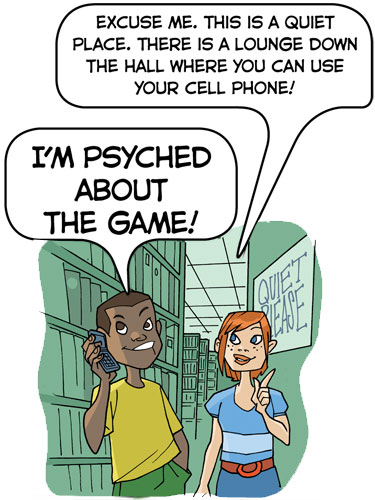Type in the provided boxes to describe each person.

Boy:
Girl:
People’s perceptions of us and our perceptions of others are based largely on what we do or say. Take a look at the picture on the next page. How would you describe each person?
Type in the provided boxes to describe each person.

Boy:
Girl:

Many people would probably find the person on the phone to be inconsiderate. We may perceive the other person to be assertive and tactful. In both instances we learn not only something about each person’s character but also about his/her values—meaning what’s valuable, or important, to them. The person on the phone valued what he believed to be his right to talk on the phone wherever he wanted. The person who approached him values the quiet of the library.
So, how do you see yourself? What do you want others to see in you—or what kind of image do you want others to have of you? One way to think about it is to decide what’s important to you. How do your words and actions show what’s important to you? People often make decisions based on what’s important to them.
On this page, make a list of things that are important to you. It can be anything from people (girlfriend, boyfriend, sister, movie actor), to things (bracelet, bicycle, new clothes), to ideas (religion, respect, justice). Then, move on to the next page.
What's Important to Me:
Now, write down ways in which you communicate to others how important the things on the previous page are to you. You may find that you communicate it verbally, or you may communicate it with actions. For instance, you may make a point of telling people, "Don't call me between 6:30 and 7:30 because that's when my family eats dinner." When you've finished typing your list, continue to the next page.
How I Communicate What's Important to Me
Think about what's important to you. How does being tobacco free demonstrate what's important you?